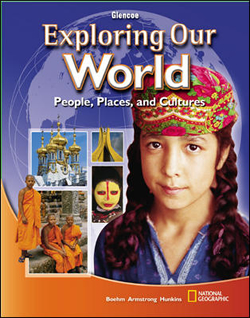
Exploring Our World: People, Places, and CulturesChapter 26: History and Cultures of East Asia and Southeast AsiaChapter OverviewsPowerful local empires ruled early East Asia and Southeast Asia, a region that is home to some of the world’s oldest civilizations. Early dynasties in China were centers of culture and innovation, and later dynasties contributed to China’s growth. China also influenced Korea and, through Korean, influenced early Japan in the arts, philosophy, government, and religion. China ruled much of what is now Vietnam, and Hindu traders from India reached parts of Southeast Asia, mixing their traditions with China’s. Europeans seeking the region’s resources gained control of much of the area beginning in the 1500s. Foreign spheres of influence in China developed because of trade, and Japan’s government adopted western technology. Korea and all areas of Southeast Asia except Thailand were dominated by European control. However, by the mid-1900s, most Asian countries had gained independence. Today, several nations have developed strong economies. Japan worked closely with business to plan and develop economic growth and now has the world’s second-largest economy after the United States. The Asian Tigers—South Korea, Taiwan, Singapore, and Hong Kong—have built strong, modern economies. In addition, China has also become a major economic power, developing somewhat later due to its Communist leadership. East Asia and Southeast Asia is one of the world’s most densely populated regions. Rapid population growth has created challenges for many countries. In China, government policy limits the number of children a family can have. In countries such as Cambodia and Laos, high birthrates contribute to growth, while countries like Japan and South Korea are shrinking in population. Nearly 60 percent of people live in rural areas in the region, but cities in East Asia and Southeast Asia are centers of industry and commerce. They are some of the largest cities in the world, and many people leave rural areas to move to cities for higher standards of living. Traditional beliefs and practices have influenced daily life, but the region has also been affected by modern technology and Western culture. Within each East Asian country, people tend to be ethnically similar. In Southeast Asia, the population is more diverse and speaks hundreds of different languages. All the world’s major religions are practiced in the region, and art forms such as calligraphy, architecture, and poetry continue to thrive. The family is the center of social life, a lifestyle that reflects the ideas of Confucius, especially in East Asia. Education is highly valued in East Asia and Southeast Asia. Some traditions are changing because of Western influences. |  |















